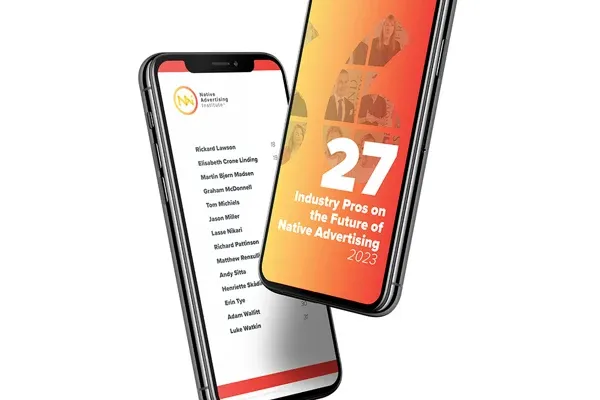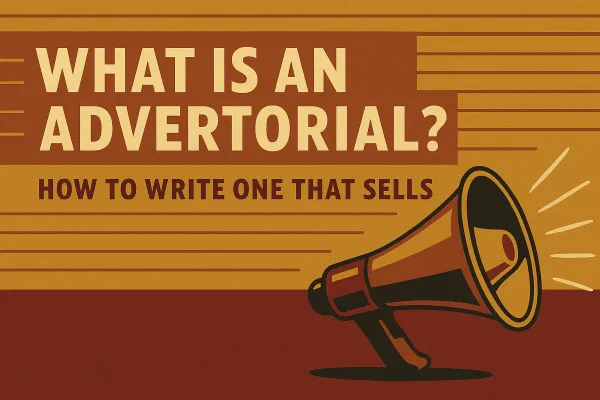
 Details
Details
It’s the generally accepted mainstay of our industry that native advertising should be providing content of value to the consumer, reader or costumer.
However, as Fara Warner, journalist and former Global Content Director at The Wall Street Journal, argued at her opening keynote at the 2018 Native Advertising DAYS in Berlin, the rise of native advertising has actually created a downfall in the quality of the content.
Everyone loves a good story but if we get caught up in approval, fabricated quotes and essentially non-authentic storytelling, the great stories evaporates and ultimately so does the consumers’ and readers’ inclination to read anything native.
I would argue that as brands get more and more involved in the creation of content, native advertising is losing its incremental value of providing great stories and important stories supported by brands.
So how do we move native forward? How do we keep readers interested in branded content? In the following I will touch on different aspects that can keep readers and consumers interested in native:
- Create better collaborations between brands and studios
- Focus on producing trustworthy and authentic content
- Use journalistic principles in the content production
Ultimately such a collaboration between a brand and a publisher is dependent on trust and respect.
Brands must trust the expertise of studios and agencies
Fara Warner finds that as branded content has evolved, agencies and publisher studios have come under pressure to be more like creative agencies where the focus is more on advertising and brand-centric content than studios created with the traditions of journalism practised by newsrooms as a foundation.
We see this emerging pressure because an increasing number of brands wants to get in on the branded content action without fully understanding the foundation that makes branded content appealing to the reader in the first place.
Fara Warner’s point is that as more clients move into branded content we should return to a form of native advertising where the publisher’s brands and its knowledge of audiences are critical.
RELATED: Get a Successful Relationship with Your Clients (podcast)
Because native has the potential to break through to the audience in a way no other advertising format can. But that can only happen if we return to collaborations between brands and publishers.
“Brands should be brave enough to stand by and support great work - and only that,” Fara Warner said during her keynote.
Ultimately, such a collaboration between a brand and a publisher is dependent on trust and respect.
As I see it, the brand needs to trust the expertise of the publisher’s studio and respect the journalistic traditions if we want to move native forward. The studio, on the other hand, needs to make sure that the brand understands, that they can entrust their image with the studio and be sure that the studio will respect the brand.
As a brand, you want to build a relationship with your audience based on truth and authenticity.
Create trustworthy and authentic content
But how do you create valuable content by using journalistic traditions and principles?
Well, you could start with the TRUTH as Melanie Deziel, Founder of Storyfuel and former Editor of Branded Content at The New York Times, proposed at the 2018 Native Advertising DAYS.
In my work as Head of Content at a content marketing agency, I put a great emphasis on creating trustworthy and authentic content with and for our clients. The truth is important because you want the reader to trust the information in the piece of content presented.
RELATED: How to Pitch, Sell & Create Native Advertising (podcast)
If the brand doesn’t tell the truth and the reader finds out (which they will!) the reputation of the brand can suffer immensely. As a brand, you want to build a relationship with your audience based on truth and authenticity.
The point seems to be that when you’re in journalism, you tell objective stories. But when you’re in advertising, you’re usually trying to interrupt someone with your information. And Melanie Deziel argues that no brand wants their advertising to be put in the same group as the interruptive and self-serving stories. Especially in the age of fake news, we need to tell the truth, believes Melanie Deziel.
{{cta('ac92fbe3-99a6-402d-a86c-ecbba6b64afe')}}
The five principles of TRUTH
However, the truth is more than the truth. According to Melanie Deziel, the TRUTH is also a framework you can use to create great stories by using journalistic principles. The framework consists of five principles that will help you create content with much greater quality and value for the reader.
Teach
Content needs to be valuable to the reader. Create DIY or How To content. Make behind the scenes videos of the manufacturing process or maybe tell the story of the invention of your product. If you as a company can provide tips and tricks that make people’s lives easier, your audience will have positive associations with your brand.
Reputable
Journalists love data and experts. Why? All great content is derived from thought leader insights, surveys, or reports. By using academic sources and third-party data your audience will trust that your content has journalistic integrity. Research or case studies are also a good way to integrate outside perspectives.
RELATED: Native Advertisers Must Learn to Collaborate to Make Great Journalism
Unique
A company’s existence or product is generally not that exciting. The brand needs to do something unique and different. Are you the first or the only to do something? Are you the best or the biggest? What’s your journey? If the company’s history can provide a unique lesson, that would make for a great piece of content.
Tension
It's not about creating drama where there isn’t one. But you need to create some kind of urgency in your content. This can be done by putting the spotlight on questions or issues that are unresolved. Are there any risks or struggles in your industry? Or any debates? You could be the one to offer some insight to solve them.
Human connection
People reflect themselves in others. So as a brand you need to try to tell stories that reflect real people or real events and stories. Charts and graphs may inform your audience but it’s the people that will make the stories resonate with them on a personal level.
Will the collaboration be based on trust and respect or will we get caught up in a loop of approval?
The first conversation must be based on truth and respect
I studied journalism at university, have written for newspapers and websites, been an editor and a managing editor. And as someone who has moved from journalism into branded journalism, Melanie Deziel is inspiring in the way she insists on using journalistic principles to create great branded content.
As a trained journalist I am aware of many of the principles she highlights but the way she puts them into the context of content marketing and native advertising is inspiring. And Melanie Deziel’s framework could be a great starting point for brands, studios and agencies to begin the journey toward better branded content.
But as Fara Warner points out, the way to move native forward begins with the first conversation between brand and studio: Will the collaboration be based on trust and respect or will we get caught up in a loop of approval?



